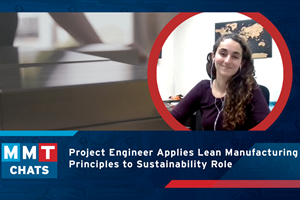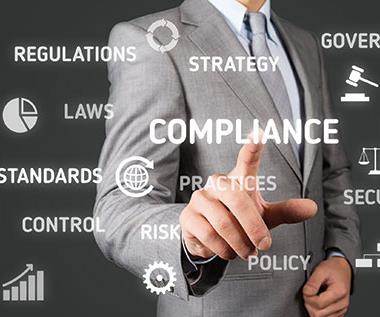Keeping Up with ISO: A New High-Level Structure, Part 3
Here's a look at Clauses 7.0-10.0 in ISO 9001:2015.
While ISO 9001:2008 focused only on manufacturing, ISO 9001:2015 is a high-level quality management program that has become a significant way to implement improvements within the more general customer-supplier relationship. The final four clauses of ISO 9001:2015, Support, Operation, Performance Evaluation and Improvement, were amended and added to support this high-level supplier quality program and to help ensure that working ISO systems support a company’s financial numbers, whereas ISO 9001:2008 did not.
7.0 Support: Overall, this clause now dictates that a company determine and provide the support necessary for its resources, which include qualified workers, to help establish, implement, maintain and improve the company’s quality management system (QMS). Specifically for mold manufacturers, qualified production personnel are needed to operate lathe equipment, EDMs, direct metal laser sintering machines, grinding equipment, milling machines, metal finishing equipment, metrology equipment, molding machines and more.
| New or Revised Clauses of ISO 9001:2015 | ||
|---|---|---|
| ISO 9001:2008 Structure | Clause | ISO 9001:2015 Structure |
| Scope | 1.0 | Scope |
| Normative References | 2.0 | Normative References |
| Terms and Definitions | 3.0 | Terms and Definitions |
| Quality Management Responsibility | 4.0 | Context of the Organization |
| Management Responsibility | 5.0 | Leadership |
| Resource Management | 6.0 | Planning |
| Product Realization | 7.0 | Support |
| 8.0 | Operation | |
| 9.0 | Performance Evaluation | |
| 10.0 | Improvement |
|
Under ISO 9001:2008, this clause required job descriptions
that were too general and did not define duties and responsibilities, so the necessary supports to improve the QMS were hard to determine. This clause under ISO 9001:2015 requires industry-specific job descriptions with supporting documentation of knowledge, experience, skills, aptitude and attitude to perform the job adequately. Job descriptions must include details of a position’s required technical competence in, for example, strategic planning, financial reporting, project management, marketing, procurement, receiving and shipping, engineering, supplier relations, and more. Supporting documentation must include formal education, degrees, educational certificates, professional certificates and self-study achievements.
8.0 Operation: The bulk of management system requirements lie within this single clause, as it addresses both in-house and outsourced processes used by a company. Prior to this latest revision, a company had to plan, implement and control only manufacturing processes. Now it must include quality, sales and customer service processes as well, and the revision also demands sufficient documentation to demonstrate that these processes have been carried out as planned. This clause under ISO 9001:2008 required only generic internal documentation, whereas ISO 9001:2015 requires industry-specific internal and external communications documentation.
This latest revision also requires that companies provide objective evidence of product quality via certificates of compliance, test reports, statistical records and process control. It also requires that all certifications related to special processes, such as plating, anodizing and heat treatment, state specifications (including revision levels of the specifications) to which the parts were processed. All certifications related to raw materials must now be the original mill certification and must include a record of actual physical and chemical material analysis, and a certificate of conformance to the applicable material specifications. Lastly, personnel performing work on the product must prove qualification for the type of work being performed, such as, for example, welder certification.
9.0 Performance Evaluation: This new clause requires companies to determine what, how and when things are to be monitored, measured, analyzed and evaluated. An internal audit is part of this process to ensure the management system conforms to the requirements of the company as well as to the standard itself. A management review is also required to determine whether the management system is suitable, adequate and effective.
ISO 9001:2015 added this clause with the following requirements:
• Suppliers must notify customers of any significant changes, such as company name, location or senior/top management.
• Suppliers must maintain control of quality records for the number of years specified on the purchase order.
• When indicated on a drawing or purchase order, a supplier must monitor key characteristics using statistical process control (SPC), such as the supplier’s ability to reduce defects, and material handling and manufacturing costs. Improvements will lead to the elimination of late shipments and reduced inventory.
• At all times, the supplier must maintain the integrity and identification of each lot (for example, 10,000 pounds of polymer received in 1,000-pound boxes) received for processing. This clause now requires suppliers to keep track of and record data before, during and after injection molding (including incoming inspection, in-process inspection and final inspection). ISO 9001:2008 did not require all these quality checkpoints.
This clause also requires measureable objectives at relevant functions and levels.
Objectives are something to be attained within a defined timeframe. Functions are departments, such as purchasing, design, human resources, manufacturing and quality control/assurance. Levels are reporting positions, such as president/CEO, vice president, manager, supervisor and technician; and relevant refers to anyone in a company who contributes to its success. Examples of measureable objectives might be: “In 2016, reduce scrap in Dept. A by 20 percent compared to 2015,” or “In 2016, achieve a ‘first-time-through’ success rate of 85 percent for all new designs that are turned over to manufacturing.”
10.0 Improvement: In an ever-changing business world, not everything always goes according to plan, so this new clause was added to dictate how non-conformities and corrective actions should be managed to ensure continuous improvement throughout the company. Such improvements might include, for example, reducing scrap and rework, improving productivity with tighter part quality standards, ramping up for new products, increasing production capacity, reducing costs, improving cycle times, enhancing machine/process flexibility, and integrating ISO 9001:2015 with other management systems and regulatory compliance.
Related Content
Top 10 Topics to Cover During an ISO 9001 Manufacturing Audit
Take a look at this practical hands-on approach to conducting a quality audit.
Read MoreDynamic Tool Corp: Leadtime Leader Insights and Bold Plans for the Future | MMT Chats
MoldMaking Technology Editorial Director Christina Fuges gets the scoop from our 2024 Leadtime Leader Award Winner Dynamic Tool Corp., on the company's future, their trade show experience, finding new talent and the impact of this industry recognition.
Read MoreMMT Chats: Project Engineer Applies Lean Manufacturing Principles to Growing Sustainability Role
MoldMaking Technology Editorial Director Christina Fuges catches up with MMT’s 30-Under-30 Honoree Katherine Pistorius, who has added Regional Sustainability Coordinator alongside her Project Engineer duties, which demonstrates the many paths one can take in a manufacturing career. Here she shares how this opportunity unfolded for her and what the job entails today and in the future. This episode is brought to you by ISCAR with New Ideas for Machining Intelligently.
Read MoreMMT Chats: A More Modern NPE “Made for You”
The Plastics Industry Association is making NPE 2024 a “can’t miss”’ experience with more of everything – education, exhibitors and networking! The PLASTICS Industry Association Chief Operating Officer Glenn Anderson and Director of Trade Show Marketing Damaris Piraino share what’s in store for attendees of next year’s May 6-10, 2024 in Orlando, Florida.
Read MoreRead Next
Keeping Up with ISO: Moving to ISO 9001:2015 Requires a Top-Down Approach
Implementing ISO guiding principles to govern every activity within a moldmaking or molding facility is essential to properly managing the supply chain. This new column will share knowledge, highlight opportunities and spotlight rewards of the ISO 9001: 2015 revision.
Read MoreKeeping Up with ISO: A New High-Level Structure
Examining and complying with the first three revised clauses in ISO 9001:2015 should enable your company to produce metrics on problem areas, track customer feedback and establish a change-management process.
Read MoreHow to Use Strategic Planning Tools, Data to Manage the Human Side of Business
Q&A with Marion Wells, MMT EAB member and founder of Human Asset Management.
Read More




















